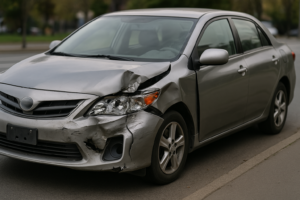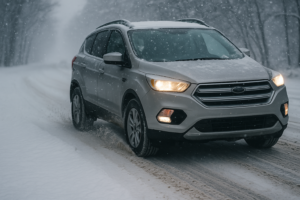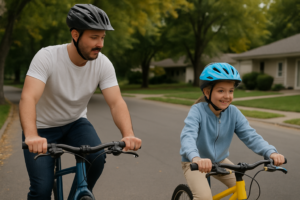The New Legal Frontier of Autonomous Vehicles
With autonomous vehicles now operating on public roads, the legal framework for auto insurance is rapidly evolving. Knowing your rights after a tech-related accident has never been more important, as responsibility shifts from drivers to manufacturers and software developers, creating unprecedented legal challenges for accident victims. For a comprehensive understanding of these changes, you can review the National Highway Traffic Safety Administration (NHTSA) guidelines.
Were You or Someone You Know Affected
Self-Driving Car Accident Statistics What You Need to Know
- Autonomous vehicle accidents are increasing annually. According to recent NHTSA data, there were 1,450 self-driving car accidents reported in 2022 alone, with 473 incidents already reported in the first half of 2024. Understanding these trends is crucial for anyone involved in an autonomous vehicle incident.
- The scope of injuries is significant. Approximately 10% of autonomous vehicle accidents result in injuries, and 2% result in fatalities. This data underscores the serious nature of claims involving self-driving technology.
How Insurance Claims Have Fundamentally Changed
- Complex liability determination requires technical expertise. Accidents now involve analyzing vehicle data logs, algorithmic decision-making, and technical specifications that demand specialized knowledge to determine who is truly at fault. This shift reflects the emerging doctrine of product liability for software-driven decisions, a gray area in many jurisdictions due to limited case law.
Multiple potentially responsible parties. Claims now frequently involve manufacturers, software developers, component suppliers, and infrastructure providers, all of whom may share liability for autonomous vehicle accidents. As of 2025, only a few U.S. states (like California and Arizona) have formal frameworks for testing and liability assignment involving autonomous vehicles, as outlined by the U.S. Department of Transportation.
Self-Driving Car Accident Statistics What You Need to Know
- You retain full right to compensation regardless of technology. Victims of autonomous vehicle accidents are entitled to seek full compensation for medical expenses, lost wages, and pain and suffering, just as with conventional accidents.
Digital evidence is now crucial and time-sensitive. Vehicle data logs, sensor recordings, and software version information have become critical evidence that must be professionally preserved immediately after an accident. This includes black box event data recorders (EDRs), LiDAR logs, and ADAS (Advanced Driver Assistance Systems) communication records, as categorized in the SAE Automation Levels Chart.
Understanding Autonomous Vehicle Technology Levels
- Not all self-driving vehicles are created equal. The Society of Automotive Engineers (SAE) defines six levels of driving automation, from Level 0 (no automation) to Level 5 (full automation), which directly impacts liability determinations. Currently, most “self-driving” vehicles on the road are actually Level 2 (partial automation) or Level 3 (conditional automation).
Technology level affects liability assignment. Understanding whether a vehicle has Advanced Driver Assistance Systems (ADAS, Levels 1-2) or Automated Driving Systems (ADS, Levels 3-5) is crucial for determining who bears responsibility in an accident, the human driver, the manufacturer, or both.
Unique Challenges With Autonomous Vehicle Claims
- Advanced technology creates corporate defense advantages. Manufacturers often leverage technical complexity to confuse claimants and evade responsibility, making expert legal representation more important than ever.
- Evolving regulations create legal uncertainty. Federal and state laws continue adapting to autonomous technology, creating a constantly shifting legal landscape that requires specialized legal knowledge to navigate effectively.
Common Accident Scenarios and Liability Patterns
Pre-crash movement patterns reveal liability trends. NHTSA crash data analysis shows that most autonomous vehicle accidents occur while the vehicle is proceeding straight (528 incidents) or stopped (455 incidents), with turning maneuvers also presenting significant risk. Understanding these patterns can help establish liability in your case.
Crash partner behavior impacts claim strategy. The most common scenario involves another vehicle proceeding straight (563 incidents) or backing up (111 incidents) when colliding with an autonomous vehicle. This data is crucial for reconstructing accidents and determining shared liability.
How to Protect Your Rights
After an Autonomous Vehicle Accident, You Should:
Document everything immediately. Photograph the scene and damage from multiple angles, and gather witness statements and contact information.
Preserve critical digital evidence. Immediately request preservation of digital vehicle data, including system logs, sensor data, and communications records.
Exercise caution when communicating. Avoid admitting fault or speculating about the vehicle’s behavior, as comments made without legal guidance can be especially damaging in these technically complex cases.
Seek specialized legal representation promptly. Consult with attorneys experienced in autonomous vehicle cases before speaking with insurance representatives or accepting any settlement offers.
Major Companies and Liability Considerations
Autonomous vehicle manufacturers vary in safety records. Tesla vehicles (with ADAS) were involved in 53.9% of all reported incidents, while Waymo (with ADS) had the most fully autonomous vehicle accidents. Different companies present different liability challenges based on their technology approach.
High-profile cases have established precedent. Notable accidents, such as the 2023 Cruise robotaxi fatality in San Francisco and the 2018 Uber self-driving test vehicle fatality in Arizona, have shaped the legal approach to autonomous vehicle liability. These cases demonstrate the complex interplay between human oversight and technological failure.
Why Specialized Representation Is Essential
- Technical expertise combined with legal knowledge is required. Our attorneys understand both the technical aspects of autonomous vehicles and the evolving legal framework, providing a crucial advantage in these complex cases.
- Resources to challenge powerful corporate interests. We have the expertise and connections with technical specialists needed to challenge automobile manufacturers and technology companies on equal footing.
Geographic Hotspots for Autonomous Vehicle Claims
- Certain regions have higher incident rates. California leads with 1,677 reported autonomous vehicle incidents, followed by Texas (370) and Arizona (269). Understanding regional patterns can affect how your claim is handled based on local expertise and precedent.
- Urban centers present unique liability scenarios. San Francisco (700 incidents), Los Angeles (126), and Phoenix (109) have the highest number of autonomous vehicle accidents. Claims arising in these cities often involve unique urban driving challenges that affect liability determination.
Don’t face the complex world of autonomous vehicle claims alone. Contact our specialized attorneys today for a free consultation and discover how we can help you obtain the compensation you deserve.
(FAQ) Frequently Asked Questions
Who is liable when a self-driving car causes an accident?
Liability may rest with the vehicle manufacturer, software developers, component suppliers, or in some cases, the human operator. Each case requires detailed technical investigation to determine the specific parties responsible.
Can I sue both the driver and the vehicle manufacturer?
Yes. In cases involving partial or conditional autonomy (SAE Levels 2–3), liability may be shared between the human operator and the manufacturer, depending on whether proper intervention was possible.
What happens if the car had outdated software?
Manufacturers may be liable if failure to notify users about critical updates contributed to the crash. Software version history becomes crucial evidence in establishing this aspect of liability.
How have insurance policies changed for autonomous vehicles?
Insurance companies are developing new models that consider both vehicle technology and human intervention levels. Many insurers now offer specialized autonomous vehicle policies with different coverage structures.
What evidence is most important after an autonomous vehicle accident?
Vehicle system data, sensor logs, software update history, and communications between the vehicle and remote servers are critical evidence. Preserving this digital information immediately is essential for your case.
Has the timeframe for filing claims changed with autonomous vehicles?
While statutes of limitations still apply, these complex cases often require more investigation time. Consulting with a specialized attorney immediately is crucial to preserve vital evidence and meet all legal deadlines.
Can I still receive compensation if the accident involved partial autonomy?
Yes, you maintain full rights to compensation regardless of autonomy level. However, determining liability becomes more complex as both human and machine factors must be evaluated to establish responsibility.
What qualifies as a "self-driving" car legally?
Despite popular terminology, truly “self-driving” vehicles are not yet available to consumers. Vehicles are classified by automation levels (0-5), with each level having different liability implications. Most vehicles marketed as “self-driving” are actually Level 2 (partial automation) or Level 3 (conditional automation) and still require driver attention.
Contact Ramos Law
If you or a loved one has been injured in an SUV rollover accident, call our experienced attorneys today for a free consultation and learn about your legal rights to compensation.



